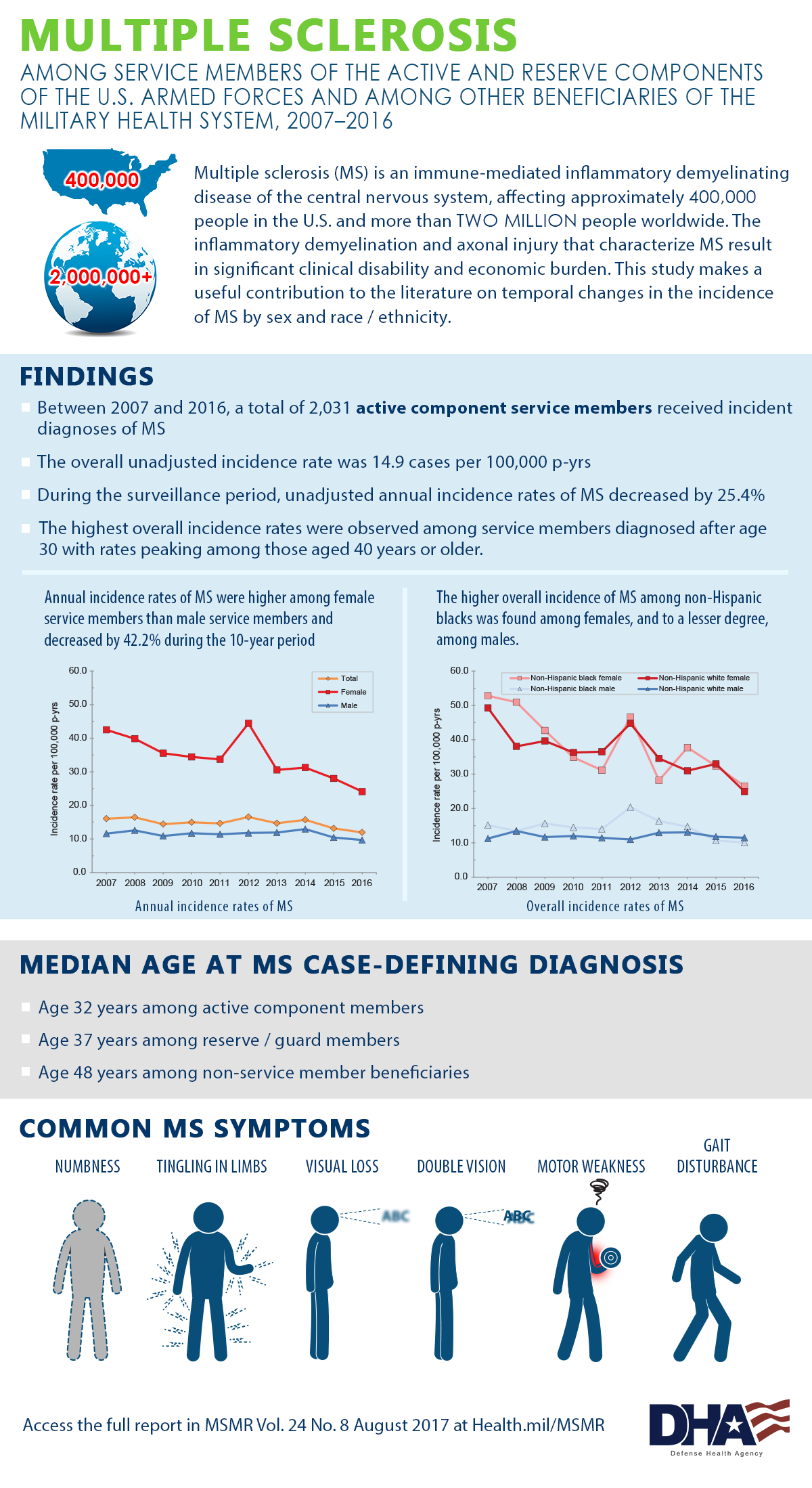Study Identifies Epstein-Barr Virus Infection as a Leading Cause of Multiple Sclerosis
By Sarah Marshall
Between 2007 and 2016, more than 2,000 active duty service members were diagnosed with multiple sclerosis – a chronic inflammatory disease of the central nervous system that results in significant clinical disability. The cause of this disease has been unknown – that is, until a group of USU researchers recently discovered that Epstein-Barr virus infection could be a primary cause.
 |
| Dr. Ann Scher, a USU faculty member, recently collaborated on a study that found Epstein-Barr virus could be a primary cause of multiple sclerosis. (Courtesy photo) |
The study was a collaboration between USU, Harvard Medical School, Massachusetts General Hospital, the University of Basel in Switzerland, and Brigham and Women’s Hospital. The researchers tested a hypothesis that multiple sclerosis is caused by a dysfunction of the immune system that is triggered by a viral infection. The Epstein-Barr virus is believed to be a top candidate, but evidence linking infection with the Epstein-Barr virus to multiple sclerosis has been inconclusive.
The researchers tested this hypothesis in a cohort of more than 8 million young adults on active duty in the U.S. military, 955 of whom were diagnosed with multiple sclerosis during their period of service. For each individual with multiple sclerosis, the researchers identified up to three serum samples (from the Department of Defense Serum Repository) collected before their onset date of multiple sclerosis. These individuals were then matched to two randomly selected individuals without multiple sclerosis of the same age, sex, race/ethnicity, branch of military service, and dates of blood sample collection.
These findings cannot be explained by any known risk factor for multiple sclerosis, and the researchers identified Epstein-Barr virus as a leading cause of multiple sclerosis. These findings further suggest that risk of multiple sclerosis might theoretically be modified by antiviral medications that directly target Epstein-Barr virus.
“Biomarker studies such as this are only practical in very large datasets due to the rarity of the condition studied and long latency between infection and development of disease. This study is an illustration of the enormous value of the Department of Defense Serum Repository and its benefit to the research community and the world,” said Dr. Ann Scher, professor of Preventive Medicine and Biostatistics at USU, one of the study’s authors.
 |
| A 2017 study looked at the prevalence of multiple sclerosis in the military. (Infographic source: Defense Health Agency) |


